The Wild Atlantic Way is an awe-inspiring coastal route stretching the length of Ireland’s magical west coast. One to tick off the bucket list, this 2600-kilometer route is a must-see for any budding adventurer!
With rugged cliffs, secluded bays and quaint villages decorating the trail, how better to uncover the coastal delights of Ireland?
Read on to discover more about The Wild Atlantic Way…
What is the Wild Atlantic Way?
The Wild Atlantic Way is a touring route hugging the dramatic coastline of west Ireland. The trail runs from Malin Head in County Donegal to the Old Head of Kinsale in County Cork.
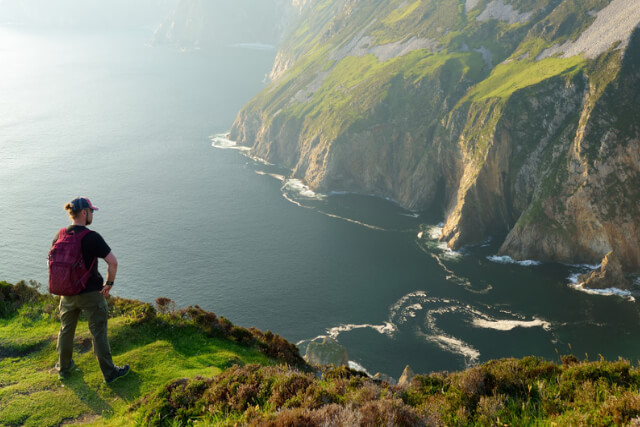
The journey begins at either end, passing through nine counties and boasting 188 designated discovery points along the way. Visitors can expect to see the delights of County Donegal, Leitrim, Sligo, Mayo, Galway, Limerick, Kerry and Cork.
Stretching over 2600km, the route is famed as the longest coastal touring trails of its kind in the world. Owing to its size, the Wild Atlantic Way route can take upwards of three weeks to complete!
The trail was founded in 2014 by Falite Ireland, the countries National Tourism Development Authority. The route aims to rival the much-loved California’s Pacific Coast Highway and showcase the hidden jewels of the west coast.
Where does the Wild Atlantic Way begin?
The Wild Atlantic Way route runs along the west coast of Ireland, from County Donegal to County Cork.
Visitors typically begin their journey from Malin Head on the Inishowen Peninsula, the northernmost point of mainland Ireland. The Old Head of Kinsale headland marks the finish line, awarding visitors with unspoilt sea views upon arrival.
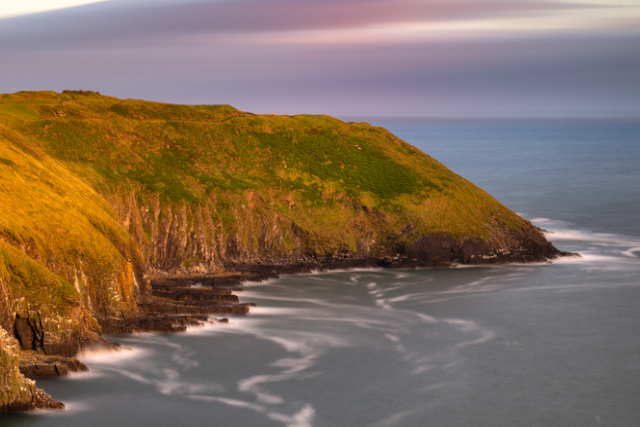
The beauty of this coastal trail is that there’s no right way to do it. Those traveling from the south may prefer to begin the journey from Kinsale, whilst Malin Head may be more accessible to others.
Whichever starting point you choose, you’re sure to be rewarded with spectacular sights along the way.
How long does it take to complete the Wild Atlantic Way?
As the world’s longest coastal route, completing the Wild Atlantic Way will undoubtedly take some time! There’s no official limit on how long it takes to complete the route; it can take as little or as long as you’d like.
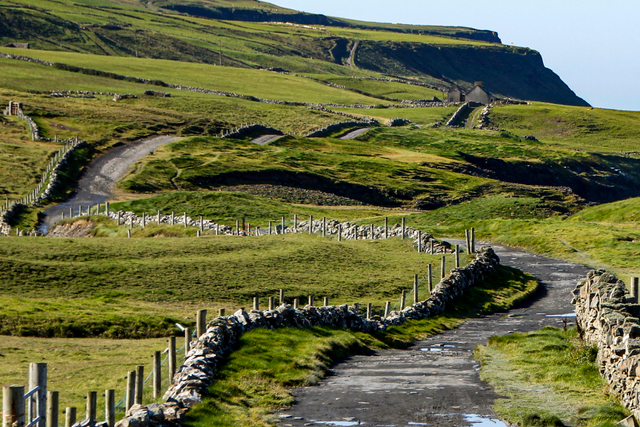
With a wealth of must-see discovery points along the way, we’d recommend at least three weeks to explore the sights. Former explorers, however, have claimed that the route can be completed in as little as five days.
The charm of the Wild Atlantic Way is that you can travel at your own pace, whether by foot or four-wheels. In 2017, a 65-year-old man walked the entirety of the Wild Atlantic Way in 103 days to raise money for charity!
Why not make a holiday of it and book a stay in one of these handpicked cottages along the Wild Atlantic Way!?
Can you walk the Wild Atlantic Way?
Stretching over 1500 miles, walking the Wild Atlantic Way is the best way to experience all that it has to offer. There is a network of routes to suit all levels of abilities along the way, including signposted treks and off-trail hikes.
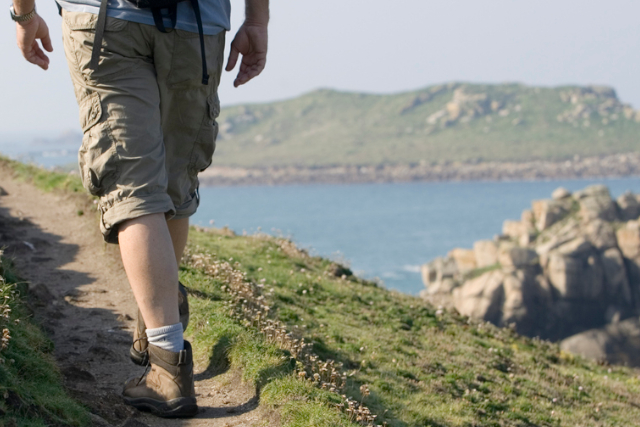
Starting at the southern point, your two-footed adventure can begin along Sheep’s Head Way. One of Irelands favourite walking routes, this 93-kilometer trail links Cork to Bantry.
In addition to the iconic Sheep’s Head lighthouse, the route offers a wealth of breath-taking coastal scenery. For those looking to challenge themselves, there are countless hiking trails further north.
The Slieve League Cliffs, Europe’s highest sea cliffs, are a must-see for thrill-seekers. Towering 1972ft, The Pilgrims Path climbs to the top of the cliffs, where you’re awarded with panoramic views across the coast.
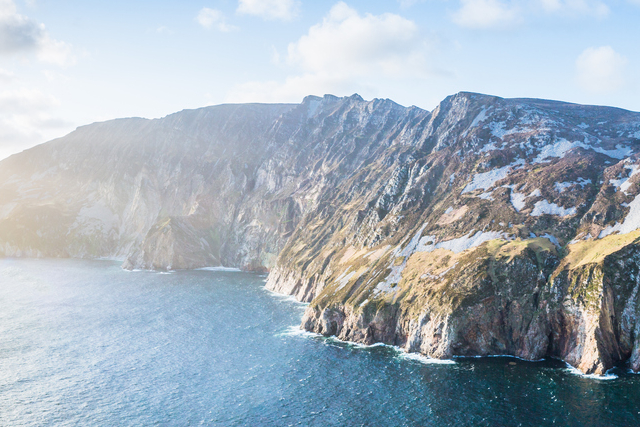
Further on, experienced hikers can tackle the narrow, knife-like ridge of One Man’s Pass. This perilous path leads to Bunglass Viewpoint, the best place to capture the cliffs in all their glory.
What can you see along the Wild Atlantic Way?
Along the route of the Wild Atlantic Way, you’ll be able to view the west coast of Ireland in all its glory.
The trail’s greatest spots can be found at each of the 15 Signature Discovery Points. And with countless smaller discovery points along the way, you’ll not be short on sights to see.
Signature Discovery Points in County Donegal
Starting in the north, you’re guaranteed to see spectacular coastal scenery from Malin Head on the Inishowen peninsula in County Donegal. Home to the endangered corkcrake, the rugged headland is a haven for birdwatchers.
The Inishowen 100 is a 100-mile route that runs along the peninsula, showcasing some of County Donegal’s most beautiful scenery.
Positioned on the Fanad Head peninsula, Fanad Lighthouse has been hailed as one of the world’s most beautiful lighthouses. Within an Area of Outstanding Natural Beauty, this working lighthouse is not one to be missed.
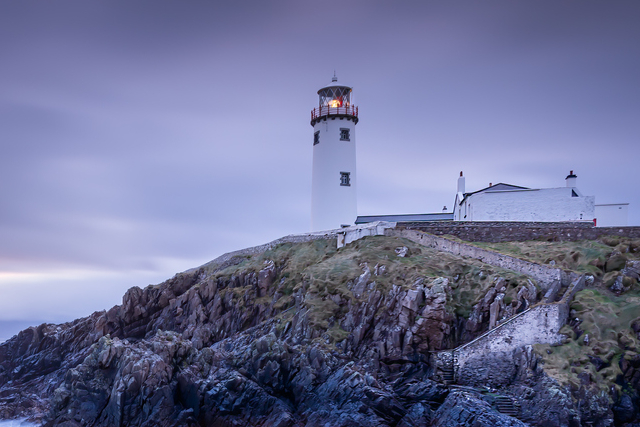
The Slieve League Cliffs, Europe’s tallest of their kind, are a must-see on any trip to West Ireland. Bunglass Viewpoint can be reached via a footpath that leads to the cliffs’ best vantage point.
Our guide on 16 of the Best Donegal Restaurants is sure to keep you fueled for your adventures!
Signature Discovery Points in County Sligo
In Mullaghmore, you can enjoy a day at the beach before venturing on to Mullaghmore Head. Popular with surfers, you’ll find a plethora of watersports opportunities in this area.
Signature Discovery Points in County Mayo
Further along the coast, you can admire the iconic Dún Briste seastack from the clifftops of Downpatrick Head. Once part of the mainland, this eye-catching stack of rocks towers a staggering 150ft above sea level.
Keem Strand’s white, Blue-Flag award-winning sands provide a much-needed change of pace. Once home to a basking shark fishery, keep an eye out for fins piercing the surface of the water!
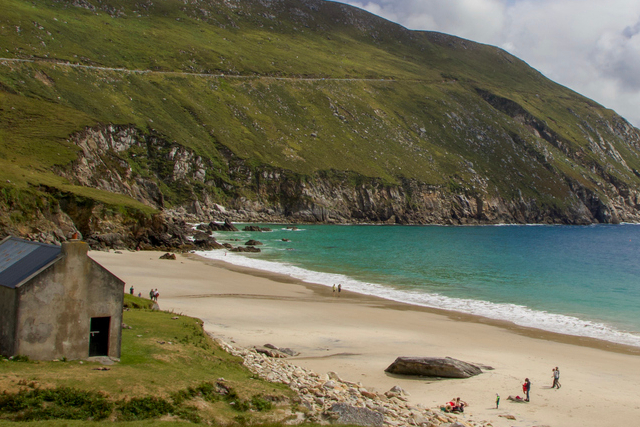
Signature Discovery Points in County Galway
A 90-minute sightseeing boat tour is the best way to explore the delights of Killary Harbour. Irelands only fjord, Killary Harbour stretches 16-kilometres in length. Where better to enjoy nature than under the shadow of Ben Gorm and the Maumturk Mountains?
Further south, the peat bog at Derrigimlagh is sure to be a hit with explorers. Rich in plant and wildlife, a single track road runs through the rugged landscape, dotted with lakes, flowers, and fauna.
Signature Discovery Points in County Clare
One of Irelands favourite tourist attractions, the Cliffs of Moher tower 214 metres above sea level.
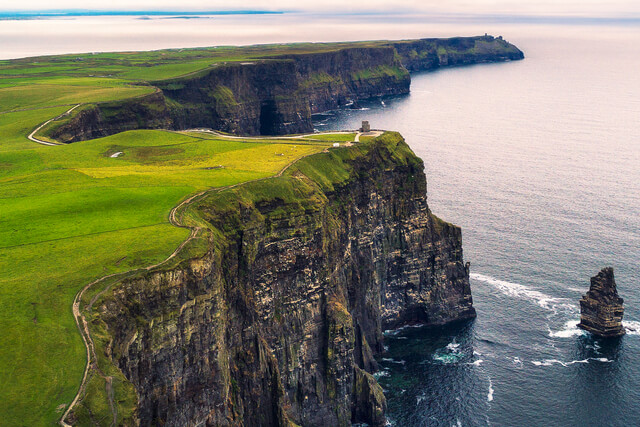
Not one for the faint of heart, the Doolin Cliff Walk to reach the Cliffs of Moher can be dangerous. Views of the Aran Islands and the Leap of the Foals await those who dare. Due to the treacherous conditions, children and four-legged friends are not permitted.
The Loop Head Heritage Trail follows the coastline of County Clare’s westernmost peninsula.
The route is popular among walkers, owing to its rich wildlife and spectacular sea views. With colonies of seabirds and bottlenose dolphins decorating the shores, you’re sure to snap the perfect photo here!
Signature Discovery Points in County Kerry
The next point of interest along the trail is Blasket View. Overlooking The Blasket Islands, this designated viewing platform frames unrivaled views.
The island’s abandoned village can be reached via ferry from Dunquin Harbour. Uninhabited since 1953, ruined stone-built cottages decorate the landscape.
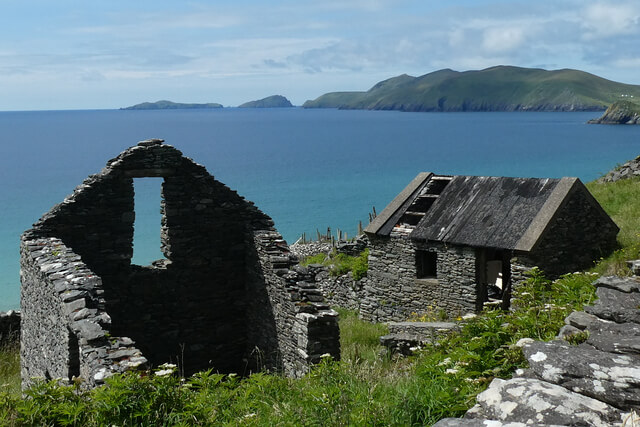
Movie buffs will be delighted with a visit to Bray Head, found at the western point of Valentia Island. The Bray Head Loop is a 7-kilometre walking trail leading to Bray Tower at its summit.
The Skellig Islands, famed as the backdrop for Star Wars: The Force Awakens, can be seen from the top.
Signature Discovery Points in County Cork
Accessed by Irelands only cable car, Dursey Island is a true Irish hidden gem.
Sitting at the tip of the Beara Peninsula, the island is a haven for birdwatchers and walkers alike. Rare birds inhabit the area, and views reach across the ocean towards the Skelligs and Mizen Head.
The rocky headland of Mizen Head, at Ireland’s southernmost point, is a must-see. Our Visitors Guide to Mizen Head blog is sure to help inspire your trip here!
The Mizen Head Signal Station, built in 1909, sits atop a series of rugged cliffs that tower over the sea. A distinctive arched bridge leads visitors to a vantage point that offers remarkable views across the ocean.
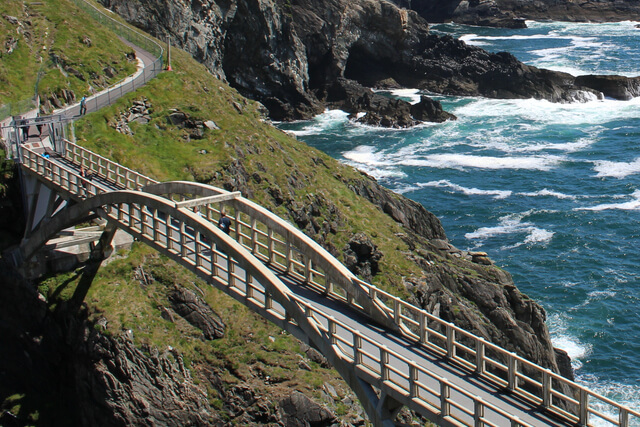
Sitting on the outskirts of Kinsale, The Old Head of Kinsale marks the end of the Wild Atlantic Way route. (Or the beginning, depending on the direction you travel!)
Here you’ll find a rocky outcrop of cliffs, a lighthouse and a scenic links golf course. To appreciate the headlands’ natural splendour in all its glory, you’ll want to set aside some time.
Getting there
Depending on your preference and location, there are several different ways to reach the Wild Atlantic Way. Due to its rural location, parts of the Wild Atlantic Way aren’t accessible via public transport.
If you’re traveling by plane, Donegal and the City of Derry airports sit close to the northernmost point of the trail.
Alternatively, Cork airport sits close to The Old Head of Kinsale in the south. Both Belfast airport and Dublin airport are easy to reach and offer a scenic cross-country route to the trail.
It’s easy to reach the Wild Atlantic Way by ferry, as the port of Cork rests a short distance from Kinsale. Perhaps more widely accessible, the ports in Dublin and Belfast are set within easy reach.
From here you can head to Enterprise Rent-A-Car to continue your onward journey!
To make your journey easier, take note of the following addresses:
Malin Head
Cionn Mhálanna
Ardmalin
Co. Donegal
Ireland
Old Head of Kinsale
An Seancheann
Downmacpatrick
Co. Cork
Ireland
What should I bring?
Just like any other holiday, it’s essential that you pack efficiently for your visit to the Wild Atlantic Way.
Owing to its coastal location, it can be windy along the trail. Be sure to pack enough layers to keep you warm, and a waterproof jacket to shelter from the elements! Breathable clothing may be more appropriate for some of the more strenuous trails.
The varying terrains can make walking in unsuitable shoes difficult, so lace up your walking boots before embarking on your adventure.
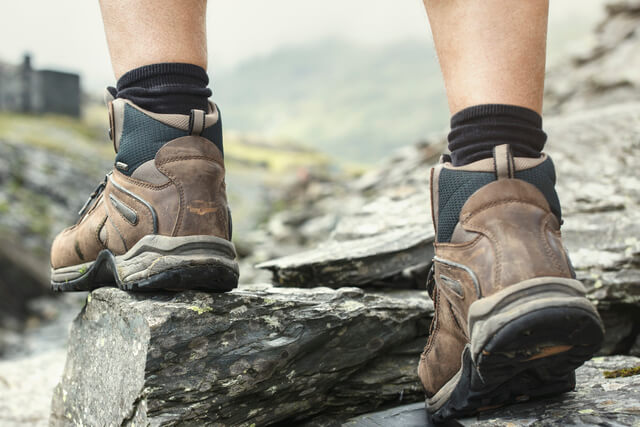
The coast of Ireland makes an excellent location for wild water swimming, so remember your swimwear and towels!
The Wild Atlantic Way is rural in areas, and amenities can be hard to come by. Stock up on food and water wherever possible to help fuel your excursions.
What is the Wild Atlantic Way in Irish?
The Irish name for the Wild Atlantic Way is Slí an Atlantaigh Fhiáin.
With miles of spectacular sights and attractions at your fingertips, uncover the delights of Ireland from the Wild Atlantic Way.
If you’re eager to embark on a two-foot adventure, our blog on the 9 Highest Mountains in Ireland might suit you!
For more inspiration on where to visit next, why not give our Best Places to Visit in Ireland guide a read?